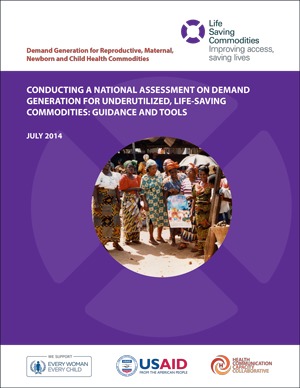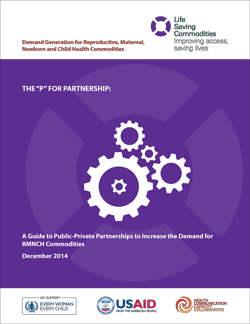
Voluntary Medical Male Circumcision In-Service Communication Best Practices Guide
The U.S. President’s Emergency Plan for AIDS Relief’s (PEPFAR’s) Voluntary Medical Male Circumcision (VMMC) Technical Working Group(TWG) identified the need for a counseling reference guide during external quality assurance assessments conducted in several priority countries in 2013-2014. These assessments revealed inconsistencies in core content and key messages communicated to clients. The Communication Sub-Group (CSG) later confirmed the need for this guide by conducting a review of in-service communication (ISC) materials. A total of 37 communication materials used in nine countries, including training guides and job aides for group education and individual counseling, were reviewed as a purposive sample to gauge key topics covered in ISC/counseling activities across the VMMC service continuum.

Engaging Community Leaders to Provide a Safe and Supportive Environment for Adolescent Girls and Young Women
This training is designed to strengthen the capacity of community…

Young Women's Savings and Empowerment Clubs: A Guide for Mentors
The Young Women Empowerment programme focuses on reducing the vulnerability of young women (20-24) to HIV and gender based violence (GBV) through community-based HIV prevention, using a combination of socio-economic approaches. This tool is focusing on economic empowerment, conducting financial education training and helping to start savings and loans self-help clubs for young women.

Engaging Community Leaders: A Tool For Facilitating Dialogue
This tool is aimed at engaging community leaders to reduce vulnerabilities and increase the safety of adolescent girls and young women (AGYW) in Swaziland's HIV response. It was developed to assist community leaders in creating a protective environment to reduce the vulnerability of AGYW and advocate for modification of harmful cultural norms and practices that place AGYW at risk of HIV infection.

Journey to a Bright Future Guide
This facilitator manual is part of a set of materials developed for use under the HC3/Sierra Leone project that will be used for training and leading community discussions which complement the HC3/Sierra Leone activities being carried out at the health facility level, as well as through mass media and national level capacity strengthening.

Swazi Men4Health: Communicating About HIV Risk Reduction Strategies with Men
This guide was developed to supplement Swaziland's extended National Multisectoral Strategic Framework for HIV and AIDS (eNSF) and address its inadequate targeting of interventions and services and lack of intensity for reaching those most vulnerable—in this case, men aged 25 to 39.

Swazi Women4Health: Communicating About HIV Risk Reduction Strategies with Women Aged 25 to 39
This guide was developed to supplement Swaziland's extended National Multisectoral Strategic Framework for HIV and AIDS (eNSF) and address its inadequate targeting of interventions and services and a lack of intensity for reaching those most vulnerable—in this case, women aged 25 to 39.

Swazi Girls4Health: Communicating About HIV Risk Reduction Strategies with Adolescent Girls and Young Women
This guide was developed to supplement Swaziland's extended National Multisectoral Strategic Framework for HIV and AIDS (eNSF) and address its inadequate targeting of interventions and services and a lack of intensity for reaching those most vulnerable—in this case, adolescent girls and young women.

The "P" for Partnership: A Guide to Public-Private Partnerships to Increase the Demand for RMNCH Commodities
A guide to public-private partnerships in increasing the demand…

Addressing the Role of Gender in the Demand for RMNCH Commodities: A Programming Guide
This guide is a resource for increasing demand for the 13 reproductive,…

Conducting a National Assessment on Demand Generation for Underutilized, Life-Saving Commodities: Guidance and Tools
This tool provides guidance to country-based partners on how…
